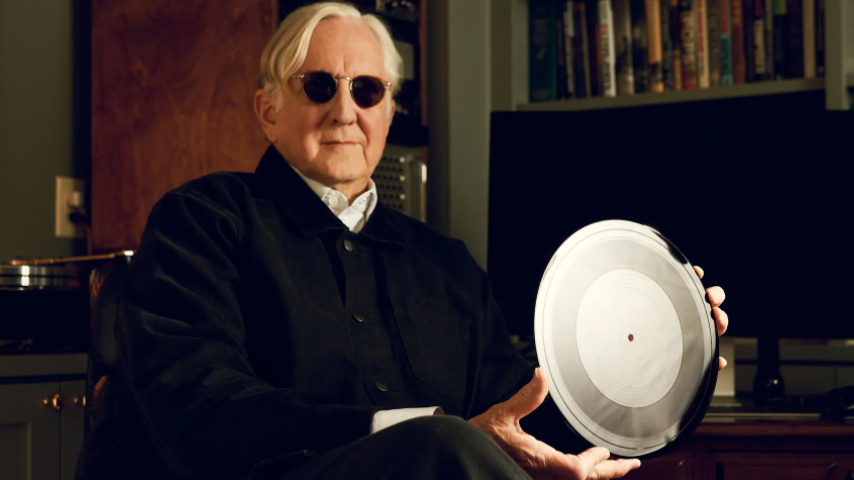The first and only Ionic Original recording of Bob Dylan sells for nearly £1.5 million
How many discs must one man sell?

A unique recording of Bob Dylan performing a new studio version of his 1962 classic Blowin' in the Wind with a full band has sold for nearly £1.5 million - and there isn't even a B-side.
The catalogue at Christie's, where the disc was auctioned with an estimate of a mere £1 million, described the track as "the only copy of Bob Dylan's 2021 recording... that will ever be manufactured. No other versions of this recording will be released or sold".
The one-off disc was recorded by the 81-year-old in March 2021 and produced by his long-time collaborator, T Bone Burnett, using the latter's new hybrid music format, Ionic Original. The new format combines some of the materials used in both vinyl and CDs to create durable, one-of-a-kind analogue discs.
Announced in April and met with a fair amount of scepticism, Ionic Originals consist of "lacquer painted onto an aluminium disc, with a spiral etched into it by music... which can be heard by putting a stylus into the spiral and spinning it", similar to a test pressing.
Unlike a test pressing or acetate, however, the Ionic Original shouldn't suffer from degradation after multiple plays because the coating on the disc is made from a gradient of sapphire and quartz, which Burnett says is, "what they use on the Space Station to shield it from the direct light of the sun". In this instance, it helps improve the disc's longevity and reduces crackling.
"Friction creates static electricity, which attracts dust, which causes pops," Burnett explained to the BBC. "So with this coating removing friction, if some dust does land on the needle, it cleans it out. So the discs are essentially self-cleaning." Hmm.
Described by Burnett as "the pinnacle of sound", the discs are playable on regular turntables and created through his own, newly-formed company, called NeoFidelity Inc. Similar to NFTs in the art world, Burnett hopes that the long-gestated project can go some way toward "reset[ing] the valuation of recorded music".
Get the What Hi-Fi? Newsletter
The latest hi-fi, home cinema and tech news, reviews, buying advice and deals, direct to your inbox.
Speaking to the BBC, Burnett said: "We're only making one because we view this work as the equivalent of an oil painting."
While no further releases have been announced, Burnett hopes that Ionic Originals will "help develop a music space in the fine arts" in the face of "the devaluing of our work by the commoditisation of the internet".
He continued: "I don't know what an original recording of Bob Dylan singing one of the most important songs of the last century is [worth] today, but I know it's not $0.001 divided by 5 billion. I don't look at this as a replacement for anything; I just look at it as another arrow in the quiver for every musician in the world [and] a whole new way of earning a living that we've never had before."
Best known for his Grammy-winning work on Raising Sand by Alison Kraus and Robert Plant, as well as the soundtracks for O Brother, Where Art Thou? and The Big Lebowski, Burnett has dabbled with new audio formats before. Back in 2008, he developed Code (also known as ΧΟΔΕ), a high-fidelity audio technology intended to produce discs with sound quality comparable to studio masters, which would "democratise high-fidelity" and combat the prevalence of MP3 as the dominant format for listening to music. We've not heard too much about them since.
MORE:
The tech endangered list: are these devices and formats the next to go?
Mary is a staff writer at What Hi-Fi? and has over a decade of experience working as a sound engineer mixing live events, music and theatre. Her mixing credits include productions at The National Theatre and in the West End, as well as original musicals composed by Mark Knopfler, Tori Amos, Guy Chambers, Howard Goodall and Dan Gillespie Sells.
-
Friesiansam If the buyer is lucky, the value will rise, otherwise, this will prove the saying about a fool and money, as has happened with many of the NFTs.Reply
